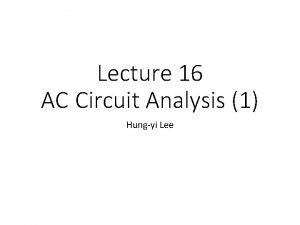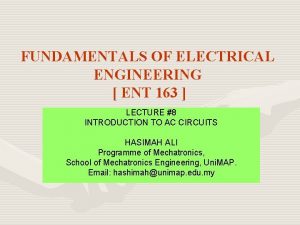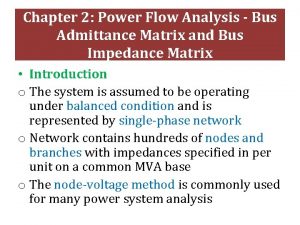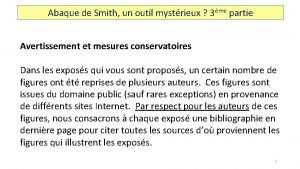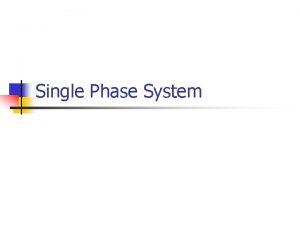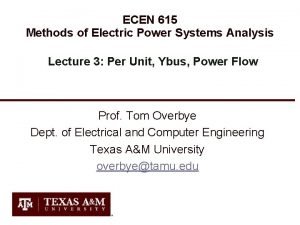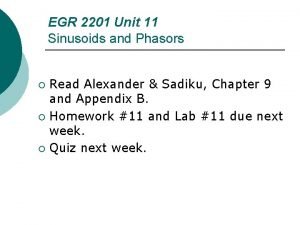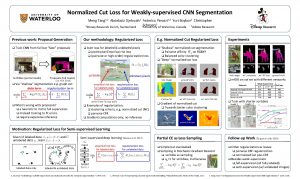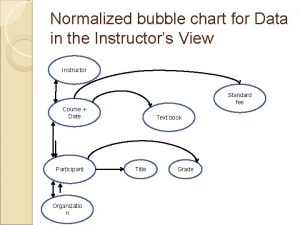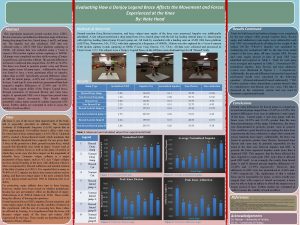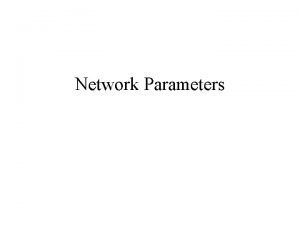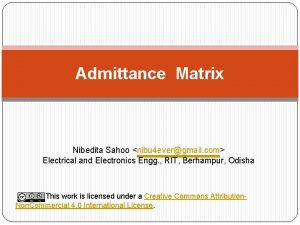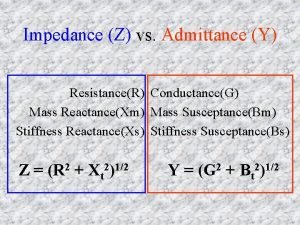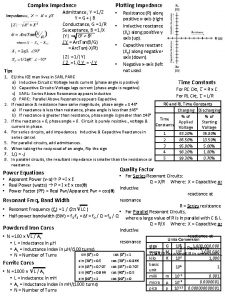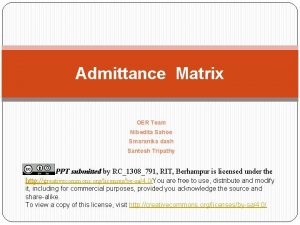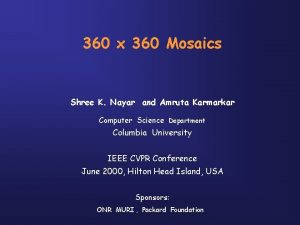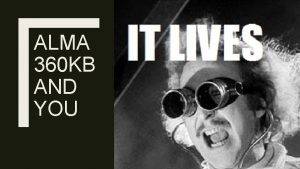16 360 Lecture 9 Normalized admittance z and


















- Slides: 18

16. 360 Lecture 9 Normalized admittance z and y are directly opposite each other on Smith Chart

16. 360 Lecture 9 Parameter equations Unit circuit Short Circuit load . B Open Circuit load

16. 360 Lecture 9 Normalized impedance Parameter equations

16. 360 Lecture 9 Parameter equations

16. 360 Lecture 9 An example Smith Chart Input impedance Wavelength toward generator (WTG) Smith Chart

16. 360 Lecture 9 An example find Zin (-0. 1 ) Smith Chart Constant | | circle, SWR Circle

16. 360 Lecture 10 SWR, voltage maximum and minimum If Smith Chart Recall: + |V(z)|max = |V 0| [1+ | |], when 2 z + r = 2 n. + |V(z)|min = |V 0| [1 - | |], when 2 z + r = (2 n+1).

16. 360 Lecture 10 An example A 50 - lossless line is terminated in a load ZL = (25+j 50). Use the smith chart to find a) voltage reflection coefficient, b) the voltage standing-wave ratio, c) the distances of the first voltage maximum and first voltage minimum from the load, d) the input impedance of the line, given the line is 3. 3 , and e) the input admittance of the line. Smith Chart

16. 360 Lecture 11 • impedance matching Zg Vg(t) A Ii Z 0 Zin Matching network ZL Tarnsmission line A’ Zin = Z 0

16. 360 Lecture 11 • single-stub impedance matching network Zg Vg(t) M Ii Y 0 Yin d A YL’ ZL Transmission line Yin = Yd’ + Ys’ 1 = Yin M’ Ys’ l A’ 1= Yd’ + Ys’ =1 Ys YL

16. 360 Lecture 11 Yin = Yd’ + Ys’ 1 = Yin Zg Vg(t) 1= Yd’ + Ys’ Y 0 + Ys’ A YL’ M’ Ys’ l =1 Re Yd’ = Yin d ZL Transmission line Yd’ + M Ii Ys’ Im A’ Ys YL

16. 360 Lecture 11 • single-stub impedance matching network Zg Vg(t) M Ii Y 0 d A Yin ZL Yd Transmission line An example A 50 - transmission line is connected to an antenna with in a load ZL = (25 -j 50). Find the position and the length of the short-circuited stub required to match the line. Smith Chart A’ M’ Ys l

16. 360 Lecture 12 • Transient on transmission line Zg Vg(t) Ii A ZL Z 0 Tarnsmission line A’ If 1, 2, …, n are transmitted on the transmission line at the same time, each frequency has its own location of voltage distribution. The total voltage V(z) is the sum of all these V i(z).

16. 360 Lecture 12 Step function and pulse function • step function U(t) = 1, if t>=0; U(t) = 0, if t<0 • single pulse function V(t) = U(t) – U(t-t 0),

16. 360 Lecture 12 • transient of a step function A Zg Vg(t) Ii ZL Z 0 Tarnsmission line A’ + - = LV 1 + - + V 2 = g. V 1 - + V 2 - = LV 2 + + g. V 1 + - V = V 1+ V 1 + V 2 + LV 1 …

16. 360 Lecture 12 + - = LV 1 - + + V 2 = g. V 1 + V 2 - = V 2 g. V 1 L - + LV 1

16. 360 Lecture 12 • Bounce Diagram = g = L T 2 T 3 T 4 T 5 T

16. 360 Lecture 12 • An example Z 0 = 75 , r = 2. 1, Vg = ? , Zlf = ? , Lf = ? V 6 V 3 V 12 s t
 Normalized admittance
Normalized admittance 01:640:244 lecture notes - lecture 15: plat, idah, farad
01:640:244 lecture notes - lecture 15: plat, idah, farad Impedance triangle
Impedance triangle Ent163
Ent163 Y bus admittance matrix
Y bus admittance matrix Abaque de smith
Abaque de smith Electrostatic heater treater
Electrostatic heater treater Rl parallel circuit
Rl parallel circuit Power balance equation
Power balance equation Two port networks
Two port networks Susceptance
Susceptance Normalized cut loss for weakly-supervised cnn segmentation
Normalized cut loss for weakly-supervised cnn segmentation Normalized cut loss for weakly-supervised cnn segmentation
Normalized cut loss for weakly-supervised cnn segmentation Bubble chart normalized value
Bubble chart normalized value Normalization
Normalization Example of unnormalized table to normalized
Example of unnormalized table to normalized Emr normalized instance hours
Emr normalized instance hours Normalized adjacency score
Normalized adjacency score Normalized device coordinate
Normalized device coordinate


